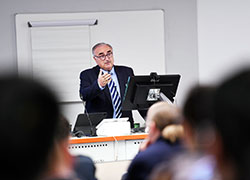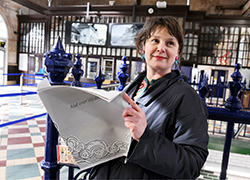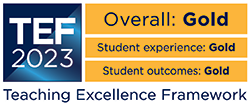Robotic research focuses on how we learn
Ways in which we learn and whether virtual environments play an effective role in our learning is the focus of a research project based here in partnership with two universities in Japan.
Stewart Martin, a Principal Lecturer and Head of Education and Professor Paul van Schaik, both from the University’s School of Social Sciences & Law, secured British Council Funding through the Prime Minister’s Initiative along with Michael Vallance of Future University and Charles Wiz from Yokohama National University, both in Japan, to research how virtual environments such as Second Life can contribute to high quality teaching and learning. As part of the ongoing research Charles Wiz was joined on a recent visit to Teesside University by students Yumi Kato, Nao Kubo, Ryosuke Ichikawa and Eric Choi. The Japanese students worked alongside four Teesside postgraduate students on an activity designed show how they devised strategies and solutions to problems – with this information then used by the research team to establish measures of effective learning. National Teaching Fellowship Stewart, who was this year awarded a National Teaching Fellowship for the quality of his teaching, said: 'We’re studying the use of immersive virtual worlds and whether they make good learning environments.
'Highly structured activities are set up to examine physically separated groups of students communicating through Second Life and to measure their learning experience, but focusing on the approaches they develop and how they use these to solve problems through various learning strategies based on intuition, logic and processes of elimination.' During the activity one group had the task of communicating details electronically to the second group on how to programme a robot. The second group, based in a separate location, then had to manoeuvre the robot around a complicated maze which the first group had built. Second Life was used by both groups to communicate, learn and teach. Stewart added: 'The group acting as the teachers had to help the other group without telling them the correct solution. Both groups had all their communication recorded and also kept diaries about how they were progressing with each of their tasks. The aim of the activity was to study the strategies the students created to teach each other and to find solutions to problems, and to establish how we can measure effective learning. 'It’s helping us to learn a lot about how people teach others and also how they learn using these kinds of technology. We compare how successful a person thinks they are at completing tasks with how much skill they think they have gained at doing this. We also measure how long it takes students to work out what they want to do, whether they make any mistakes and how they manage to solve problems.'
He added: 'We are especially interested in how people collaborate so that we can develop methods to evaluate learning in Second Life. This kind of research is of great interest to teachers and also to those working in engineering, robotics and science education.'
 Teesside University hosts groundbreaking hydrogen conference
Teesside University hosts groundbreaking hydrogen conference University supporting development of new £1m concrete plant
University supporting development of new £1m concrete plant Academic’s artwork on display at Middlesbrough station
Academic’s artwork on display at Middlesbrough station